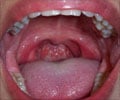Symptoms of Adult-Onset Still’s Disease
Symptoms of Adult-onset Still’s disease include fever, rash and joint pain and stiffness.
Adult-onset Still’s disease shows symptoms, which differ based on the individual and the duration of the disease. AOSD is characterized by 3 main symptoms, followed by other common secondary symptoms:
- The main symptom for AOSD is high fever (> 102°C), which persists for 7 or more days, and peaks in the afternoon or at night. At times, high temperature peaks are observed twice a day. Between temperature peaks, the individual returns to normal temperature. In many cases, the fever resolves by itself.
- The second common symptom is a pink (salmon-colored) rash. The rash appears with the advent of fever and disappears when the fever abates. There is no itchiness and the rash appears on arms, legs, and the trunk. Rubbing the skin can also provoke appearance of a rash.
- The third symptom is swelling of joints with stiffness and pain. Wrists, ankles, elbows, and knees are most commonly affected. Joint stiffness persists in the morning for many hours. Joint pain advances into arthritis over time and spreads across the joints of the body. Swelling of joints persists for nearly 2 weeks.
- Individuals are also affected by a severe, persistent, and painful sore throat. There is associated swelling of lymph nodes in the neck.
- Muscle pain is another symptom, which gradually reduces when the fever abates. However, the pain disrupts normal activities.

Some of the common associated features of ASOD are as follows:
- Enlargement of spleen
- Inflammation of the heart and lungs, specially the lining surrounding the organs (eg, pleuritis, pericarditis, pulmonary infiltrates)
- Liver failure resulting in an increase in liver enzymes

- Reactive hemophagocytic syndrome (RHS) - activation of macrophages, which consume hematopoetic cells resulting in a fatal hematological condition.
- Pharyngitis and lymphadenopathy
- Pain while inhaling
- Pain and swelling in the abdomen








